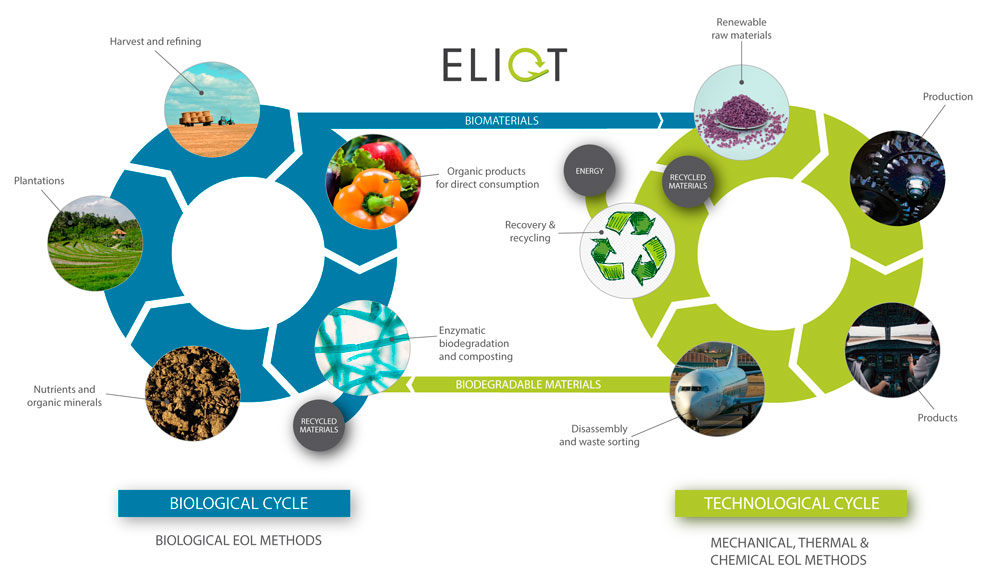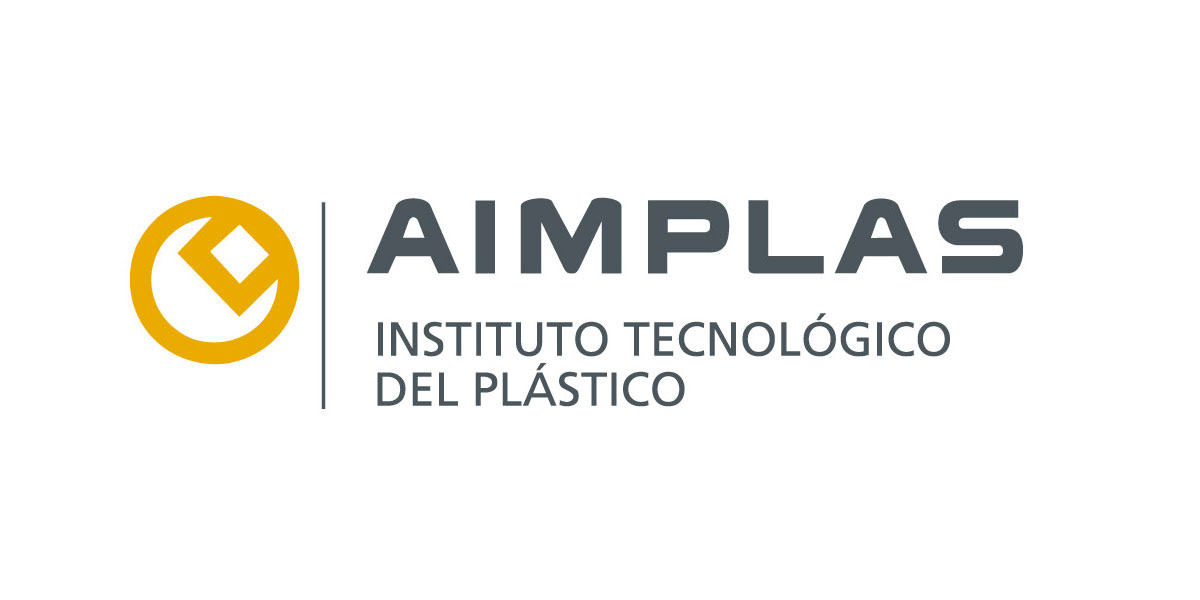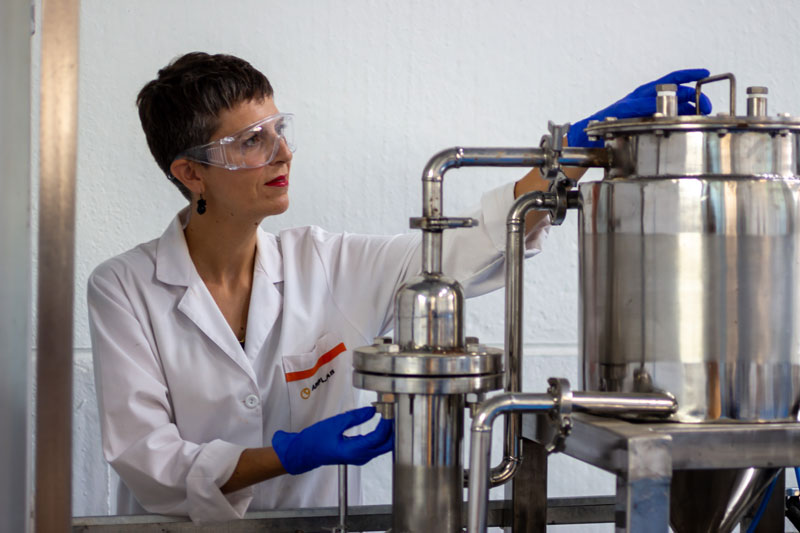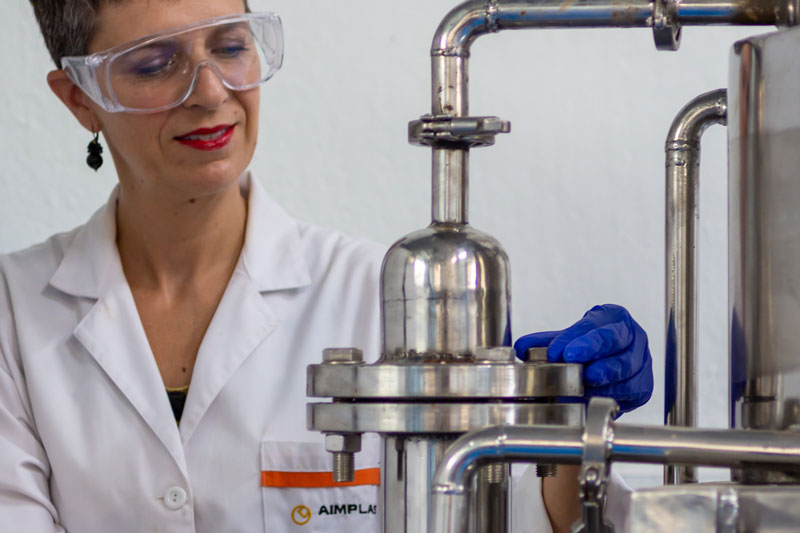Project
About the project
ELIOT aims to provide new innovative and green technologies for EoL of commonly used natural fibres and biobased resins with increased resource efficiency and fully align these biomaterials with the circular economy principles (Figure 1).
To this end, the project will propose and develop innovative solutions for the EoL of the new generation of biocomposites by:
- Reviewing the current treatment technologies for conventional FRP composite waste
- Evaluating their potential suitability to be applied to the biocomposite waste and selecting those treatment alternatives that appear as the most feasible
- Tailoring the selected treatment technologies to the characteristics of biocomposites and testing them at laboratory scale
- Demonstrating their technical feasibility and life-cycle sustainability under pre-industrial scale.

Different EoL approaches will be evaluated, including mechanical, thermal, chemical and biological methods for waste recovery and recycling.
A comparison of the advantages and disadvantages of the EoL methods in terms of cost and environmental sustainability will be conducted.
ELIOT will set the basis for a wider uptake of biocomposite materials in the aircraft industry (and other industrial sectors using composite materials) by providing cost-effective methods for their EoL treatment.
Objectives
Main objective at ELIOT
Main technical objective to be achieved by the consortium in this project is the full-scale demonstration of the most promising EoL methods for biocomposite waste. Full-scale demonstration will be provided for 2 EoL methods for 2 target biocomposites, respectively, including their technical validation at pre-industrial scale and their validation in terms of life-cycle sustainability. These EoL methods will be ready to be further scaled up in industrial environments.
To achieve this main objective, the consortium will need to achieve the following specific technical targets:
By reaching the objective and targets described above the consortium will contribute to reduce the environmental footprint of the aviation industry in the airframe parts that nowadays are manufactured with composites. Aviation must move towards more sustainable resources and solutions, with an industry that is clean, competitive, safe and secure.

Results
Consortium
Team

Nora Lardiés
Senior consultant. Chemical Recycling GroupProject role: Technical coordinator.
Expert on landfill, incineration and thermal technologies: pyrolysis (conventional, fluidised-bed and microwave-assisted). nlardies@aimplas.es +34 663459064

Rajesh Mehta
Senior Consultant.Climate, Air & Sustainability
Expert on gasification, solvolysis and dissolution. rajesh.mehta@tno.nl +31 621957530


Tom Ligthart
Expert sustainability assessment Climate, Air and SustainabilityProject role: LCA and sustainability expert tom.ligthart@tno.nl +31 615571118

Judith Kessens
Senior Project ManagerClimate, Air & Sustainability
Project role: Project Management TNO, Data Management, Dissemination & exploitation board judith.kessens@tno.nl +31 622374428

Sergio Fita
Project Manager at AIMPLASProject role: Project coordinator sfita@aimplas.es +34 663460764





